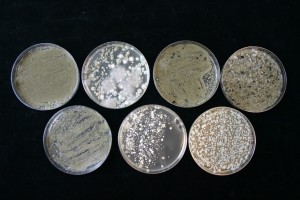There are many types of molds that can be found in a house. Molds pose a health risk to its occupants. Some are visible, others grow in hidden places and in some cases produce foul smells.
The type of mold is of no importance, they must be removed quickly to prevent health problems and further complications. While it may be possible to remove yourself, in some severe cases, it may be better to get professional assistance to ensure the complete removal.
Categories Of Mold
- Allergenic molds: These molds contain allergens that lead to allergies to humans. People with asthma and weakened immune system are mostly affected by these molds.
- Pathogenic mold: These cause serious health risks to people living with weak immune systems
- Toxic molds: These are molds that produce toxins. Though rare, they cause serious health problems when present in a home. Professional help should be sought to remove this category of molds.
Most common types of mold found in homes.
- Alternaria: This mold grows in damp places such as showers and under leaky sinks. Damp

from the NCSU PDIC Blog carpets could also attract the growth of Alternaria. The mold also grows in places which have minimal moisture. it grows both indoors outdoors and spreads very fast. People with weakened immune systems, children and the elderly are at a higher risk from health problems caused by Alternaria.
- Aspergillus: This mold is among the most common ones and one of the most dangerous. It thrives in places with high humidity and organic waste to provide food source for the mold. Its mostly found in basements and leaky surfaces.
- Cladosporium: The mold grows on fabrics such as carpets and on wooden surfaces. It also grows outdoors on plants. Open windows and doors provide a pathway for Cladosporium to enter the house. It causes skin and respiratory problems if exposed to the mold. It also causes allergic reactions such as sneezing, runny nose, itching and coughing.
- Memnoniella: This type of mold is found in papers, cotton and wooden surfaces. It produces toxins that are harmful to both humans and animals.
- Mucor: This is a type that is also common. It’s found in animal dropping and in soil. The mold can also thrive in dust inside a house. People who have weakened immune systems easily develop lung infections if exposed to it.
- Penicillium: This type of mold is found in carpets, rotting clothing, wallpaper and insulation. They spreads easily and are among the most common types of mold. The penicillin antibiotic is made from this mold. Though used for medical purposes, it is harmful and exposure to it could lead to chronic sinus problems, inflamed lungs and allergy in some cases.
- Stachybotrys chartarum: Also known as the black mold because of its black appearance. This type of mold grows commonly in places having continuous moisture such as leaky pipes or air conditioning ducts where there is a lot of condensed air. It causes the most health problems. It leads to fatigue, depression, asthma attack, sinus problems and allergies. It also has a musty smell.
Given the many different molds and health risks they pose, it’s important to ensure that a house is free of mold by keeping an eye for signs of their presence.
